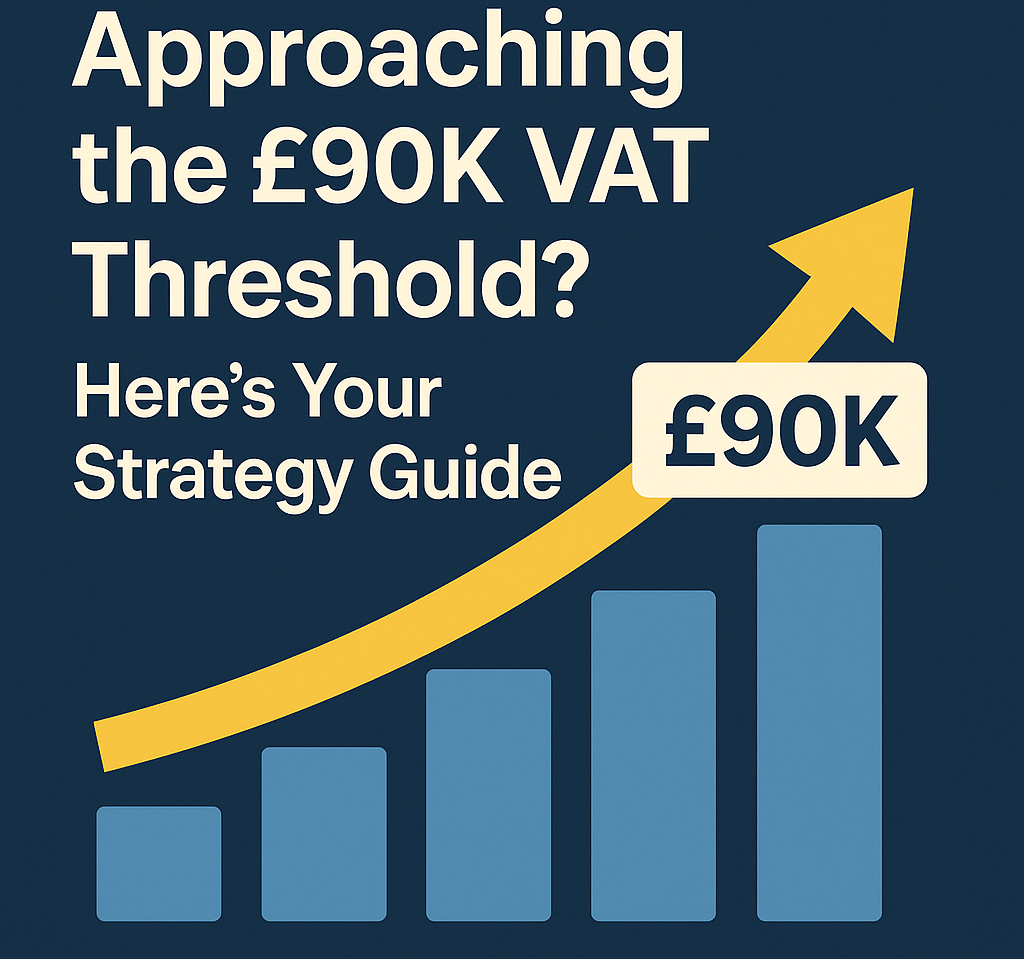Approaching the £90K VAT Threshold? Here's Your Strategy Guide
Growing your business towards £90,000 in annual turnover represents both an achievement and a critical decision point. As you approach the VAT registration threshold, the choices you make now will significantly impact your tax efficiency, administrative burden, and growth trajectory.
TAX PLANNING
Michael O'Shea
7/22/20252 min read


What Happens at the £90K VAT Threshold UK
The current UK VAT registration threshold stands at £90,000. Once your VAT taxable turnover exceeds this in any rolling 12-month period, registration becomes mandatory. You must also register if you expect to exceed £90,000 within the next 30 days alone.
Missing the registration deadline can result in penalties and the requirement to account for VAT you should have charged but didn't.
Should I Go Limited Before VAT Registration?
Recent tax changes have shifted the sole trader vs limited company calculation:
Below £60,000 profit: Sole traders typically pay less tax
£60,000-£70,000: Tax burden is similar
Above £80,000: Limited companies often pay more when extracting all profits
However, incorporation offers benefits beyond tax: limited liability protection, enhanced credibility with larger clients, and easier access to investment. The downsides include increased administrative burden, Companies House filing requirements, and loss of financial privacy.
VAT Registration Strategy for Small Business
When to Register Voluntarily
Consider early registration if:
Most customers are VAT-registered businesses
You have significant VAT-bearing expenses
Major capital expenditure is planned
VAT registration would enhance credibility
Cash Flow Impact
VAT fundamentally changes your cash flow:
Effectively increases prices by 20% for non-VAT customers
Quarterly VAT payments to HMRC
Requirement for Making Tax Digital compliance
Opportunity to reclaim VAT on business purchases
Preparing for VAT Registration: Essential Steps
1. Digital Systems Setup
Implement Making Tax Digital-compatible accounting software now. This prepares you for both VAT registration and the upcoming Making Tax Digital for Income Tax (from April 2026).
2. Financial Planning
Calculate post-VAT margins
Review pricing strategy
Build cash reserves for VAT payments
Consider the Flat Rate Scheme if eligible
3. Business Structure Review
Before reaching the threshold:
Separate business and personal finances completely
Create monthly management accounts
Review customer contracts for VAT clauses
Assess incorporation timing
Making Tax Digital VAT Requirements
From day one of VAT registration, you'll need:
Compatible accounting software
Digital record-keeping for all transactions
Quarterly online submissions
Digital links between software systems
Starting these processes before registration ensures a smooth transition and maintains compliance.
Your VAT Registration Action Plan
3-6 Months Before Threshold
Conduct VAT impact analysis on pricing
Get professional advice on timing
Review business structure options
Start monthly management accounts
Immediately
Implement cloud accounting software
Separate all business transactions
Build VAT payment reserves
Train team on new processes
Professional VAT Advisory Services
The complexity of VAT registration combined with business structure decisions demands expert guidance. Professional advisers help:
Model scenarios specific to your situation
Identify tax planning opportunities
Ensure compliance while maximising efficiency
Navigate the transition smoothly
Key Takeaway: Plan Before You're Forced to React
Approaching £90,000 turnover requires strategic thinking beyond simple compliance. Whether it's optimising your VAT registration timing, choosing the right business structure, or preparing for digital tax requirements, early planning maintains control over your business's growth trajectory.
Every business situation is unique. Your optimal approach depends on your customer base, growth plans, and cash flow requirements. Professional guidance ensures you make informed decisions that support sustainable growth.




